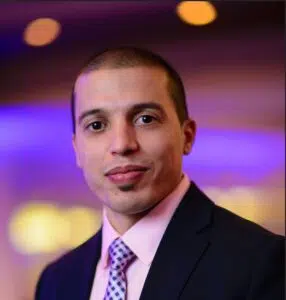How can your law firm appeal to non-English speakers, and how do you work with them when you don’t speak their language?

The answer is simple enough: You need to be able to communicate with your non-English speaking clients without investing significant amounts of time or resources. There is obviously something about your firm which already got their attention or they wouldn’t have contacted you in the first place. But how can you make sure you retain them as a client and have them refer others to you? And for clients who haven’t contacted you yet, how can you capture their interest and gain their cases?
Respecting and listening to your clients by studying a little of their language can go a long way. Studying a language does not have to mean you speak it fluently, and working with clients who don’t share your language may be as simple as being willing to put in as little as half an hour every day.
Studying a language:
- Helps you learn just enough of the basics to greet your clients, explain that you aren’t fluent in their language, and to ask them a little about their case
- Studying the most common questions you ask new clients together with basic vocabulary associated with typical cases means you are better able to help clients even if neither of you is fluent in the other’s language
- Gives you insight into the speakers’ culture so you understand more about how their culture could be impacting their situation
So where do you start when working with these clients? If you take just thirty minutes a day to study basic expressions and talk with a native speaker for at least thirty minutes a week, you’ll be well on your way. YouTube videos may be fine to start, but you may eventually prefer to pay for a formal audio course that gives you the basics of the language to study vocabulary and expressions specifically related to law. Live one-on-one classes are yet another option. Such paid solutions will often give you basic insight into the speakers’ culture as well, so you have some idea about body language and other unfamiliar cultural expectations and customs. These paid services can range anywhere from ten dollars to several hundred dollars, but once you’ve learned a few basic phrases for free, and have taken just thirty minutes a week to practice the language with a native speaker, you’ll have a better idea if you need to invest in additional learning materials.
How long does it take? That all depends on your learning goal. If you only want to learn basic expressions to greet clients, ask them how they are, basic numbers, and days of the week, it may only take a couple of weeks of dedicated study to learn that much. Ten to fifteen minutes a day of practice, then, will ensure you keep what you’ve learned fresh in your mind, and it can be done anywhere – while getting ready for work, while driving to the office, while on your lunch break, etc.
If, however, you want to study vocabulary specific to the legal industry and your practice in particular, the entire process could take as long as six months, depending on how much vocabulary you want to learn and how much you want to be able to communicate with your clients. You and your native-speaking friend or teacher (if you’re taking one-on-one classes) should take turns role playing both the lawyer and the client in order for you to become comfortable both asking and answering questions in the language.
Everyone appreciates the person who takes time to make them feel appreciated, and by studying a little of their language, you open the door to improved communication and help ensure legal representation for clients who may not otherwise have any.






